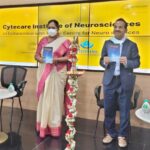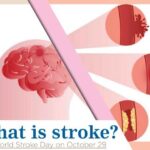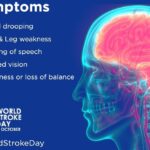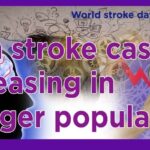Brain stroke patients quality of life should be improved.While therapy is critical, caregivers are the primary source of help and support.


One of the common reasons for disability is brain strokes. Every sixth person in the world suffers from some amount of neurological disability. In India, there are about 30 million people living with neurological disorders of whom around 6.8 million tackle disabilities due to this disorder. The figures for disability are higher for patients who suffer a brain stroke, standing around 56%. This is why rehabilitation is a critical part of recovery from a brain stroke. A rehabilitative program can go a long way in restoring or learning new ways to manage disability. It can help patients make the most of their remaining dexterity, thereby helping them overcome the loss of any ability.
Unfortunately, the pandemic limited the access to these essential healthcare services, putting at risk the rehabilitative process for these patients. Given these challenges, people recovering from a stroke must learn to carry out some rehabilitative exercises at home. By learning these self-coping skills, recuperating patients can significantly improve their quality of life. These exercises can help them carry out most, if not all of their day-to-day activities on their own. In situations where the disability is more severe, patients can reduce their dependability on caregivers.
A common outcome of brain stroke is a physical disability. It can include stiffness or weakness in the upper extremities where the person finds it difficult to move their shoulder muscle. In such a case, one must wear a shoulder brace that positions and support the joint. A physiotherapist will then work with the patient to improve the joint’s range of motion. However, there are some exercises one can do at home. Rehabilitative care at home centres around correcting the positioning of the arm, modifications within one’s home, proper arm care, and basic upper limb mobility. The patient should avoid sleeping on the affected side and use a pillow to support the arm. The patient should always sit upright, the affected shoulder should be on the outside, and it should be well supported. The same position should be followed when sitting in a wheelchair.
There are also some simple exercises that patients must do at home to improve their mobility. These include upper limb exercises and gentle stretches where they have to move their wrist, elbow, and hand. Strengthening and weight-bearing exercised are a core part of rehabilitation. Strengthening exercises usually involve light dumbbells, stretch bands or squeeze balls. However, these exercises must be undertaken under the supervision of a trained physiotherapist. Once the patient knows the correct manner of doing the exercise, the therapist may allow these under self-supervision.
A stroke may also affect the lower extremities or the foot, which affects the patient’s gait and balance. A foot splint may help in providing support and improving balance in such cases. There are also different types of walking aids that help a patient with mobility. Even with the additional support, one must take care to maintain one’s balance. Like in the case of an upper limb disability, one must be careful about the handling and positioning of the affected lower limb. One must try to keep mobile at however a limited capacity. A therapist would usually recommend different types of equipment for people who cannot stand, only after a thorough evaluation to avoid the ill effects of recumbency.
A stroke can limit a patient’s movement in such a way that they cannot move around in their house as before. One may have to make small ergonomic adjustments in the house to accommodate their restricted movement. These changes are necessary to reduce undue exertion and mental stress and improve accessibility. It can help them regain their confidence and spur them to work hard on their recovery. If a patient has to be moved, we must ensure that the affected limb is not jostled and is kept well supported. This care must be taken when the person is sitting, lying down, or moving. One must also be cautious of neglect of the affected side. To counter these and ensure that the patient tries to use their disabled limbs, put all objects and approach them on their affected side.
Although the physical disability can severely limit the patient’s capabilities, perhaps the most distressing is cognitive decline. It can affect their speech, memory, and motor skills. Patients can become irritable and depressed. It is important for caregivers to show understanding and patience when dealing with a recovering patient. While therapy is critical, caregivers are the primary source of help and support. One can help by assisting in daily activities, like brushing one’s teeth, till the patient regains their cognition or ability to carry out these simple tasks.
Improve Quality of Life in Brain Stroke Patients – Rehabilitative therapy is crucial for patients recovering from a brain stroke. It helps them to recover from the trauma, restoring all or some of their abilities. More importantly, it improves their quality of life by helping them regain their confidence and independence.











